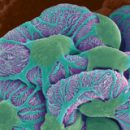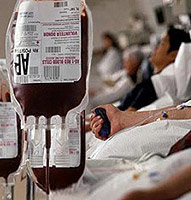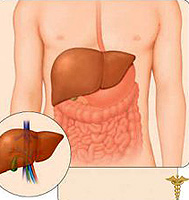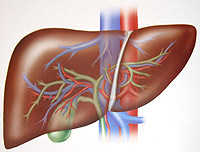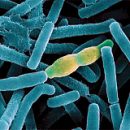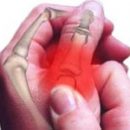Dyskinesia biliary tract is one of the frequently found diseases. The mechanism of development of the disease is associated with a violation of the process of reducing the gallbladder, which prevents the normal outflow of bile.
Content
The concept of dyskinesia of biliary tract
Dyskinesia of the biliary tract relate to frequently occurring diseases. Women are getting 10 times more often than men. Dyskinesia of the gallbladder and sphincters of biliary tract is an incomplete, excessive or late reduction in the muscles of the gallbladder or sphincters of biliary tract, which leads to a violation of the normal outflow of bile.
Reducing the gallbladder occurs under the action of a cholecystokinin hormone, which is distinguished by the cells of the duodenal mucosa. The selection of cholecystokinin occurs under the action of food. In case of food in the duodenum, a cholecystokinin will be released, the gallbladder is reduced, and the Sphinteer oddy relaxes. Bile stands out in the duodenum. All this process depends on the state and tone of the muscles of the gallbladder, sphincter and the character of food.
Dyskinesia Options for Gallways
The causes of the occurrence of dyskinesium of the biliary ways have not yet been finally clarified. By origin, it is distinguished:
- primary
- Secondary gallbladder dyskinesia and biliary tract
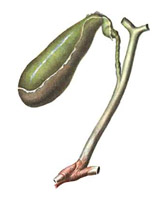 Primary dyskinesia arises in connection with a violation of the neuromuscular regulation of the motor activity of the gallbladder and sphincters of the biliary tract. It is believed that such a kind of diskinesium occurs in patients of asthenic buildings having neurotic or psycho-emotional violations. So patients, in addition to the diagnosis of dyskinesia of biliary tract, often establish diagnoses of neurocirculatory dystonia or vegetative dysfunction. The causes of the occurrence of diskinesium are diseases of the endocrine system, in particular, the diseases of the thyroid gland, germ glands, climax.
Primary dyskinesia arises in connection with a violation of the neuromuscular regulation of the motor activity of the gallbladder and sphincters of the biliary tract. It is believed that such a kind of diskinesium occurs in patients of asthenic buildings having neurotic or psycho-emotional violations. So patients, in addition to the diagnosis of dyskinesia of biliary tract, often establish diagnoses of neurocirculatory dystonia or vegetative dysfunction. The causes of the occurrence of diskinesium are diseases of the endocrine system, in particular, the diseases of the thyroid gland, germ glands, climax.
The secondary dyskinesia of the gallbladder and biliary tract occurs in patients with diseases of other organs of the gastrointestinal tract (chronic gastritis, duodenitis, enteritis, colitis). Especially often dyskinesia occur during diseases of the duodenum, when due to the damage of the cells of the duodenal mucosa cells, the emission of cholecystokinin is violated. Secondary dyskinesia occur in patients with biliary disease or chronic cholecystitis.
According to the nature of the violations of the engineering function of the biliary ways of diskinesia is divided into:
- Hypertensive-hyperkinetic
- hypotonic hyokokinetic
- Mixed
Hypertensive-hyperkinetic dyskinesia meets less. It is characteristic of people with an excitable nervous system, asthenic physique, combined with neurosis. The young age of patients prevails. It is believed that hypertensive diskinesia contributes to food with a large number of spices, seasonings, sharp dishes.
Hypertensive-hyperkinetic dyskinesia gallbladder manifests itself pain. Paints appear in the area of the gallbladder, in the right hypochondrium. Pains are given to the right half of the chest, right blade, clavicle, shoulder, right half of the neck or lower jaw. Pain intensity may be different. Often pains are quite strong. Pain duration before half an hour. Provokes pain attack with oily or acute food, psycho-emotional tension.
The hypotonic-hyokoinethic dyskinesia of the gallbladder and biliary tract is more common and is observed mainly in persons who lead a low-wear lifestyle, are overweight.
The reason for the occurrence of the hypotension of the biliary tract can be chronic inflammatory diseases of the mucous membrane of the stomach or duodenum. More often sick people. Pain in this form dyskinesium expressed slightly. They are usually stupid, noving, accompanied by a feeling of resolving in the right-wing area. Patients more often occur digestion disorders, since with the hypotension of the gallbladder, the selection of bile in the intestine slowed down.
During digestion in the intestine, there is a lack of bile acids, which is manifested by impaired suction of fats, vitamins, cholesterol, calcium salts. In patients after meals, especially when overeating, nausea arise, flatulence, stool disorders. Regards are often developing, due to the disadvantage of the stimulating effect of bile acids on the intestinal muscles. But sometimes there are diarins that call hypocholic diarrhea. This condition is also due to the lack of bile acids in the intestine.
Disorders of digestion contribute to obesity, metabolic disorders that manifest themselves the development of polyarthritis, urolithiasis. With a long period of process in the bustling bubble and ducts, stones can be formed or develop an inflammatory process.
Diagnosis of the disease
Diagnosis of dyskinesium gallbladder and biliary tracts are carried out using duodenal sensing. In case of hypertonic form, dyskinesium introduction of the bile-separation stimulator (magnesia sulfate) often causes pain attack and bubble bile fraction stands out quickly or intermittently, the phase of reduction of the gallbladder can be reduced. In the hypokinetic dyskinesia, bile from the gallbladder flows through a large period of time after stimulation, the selection of bile is slowly. Also, cholecystography and intravenous chopper, radioocolecystography. These studies reveal changes in filling and emptying of the gallbladder and allow to eliminate other diseases of the biliary tract and gallbladder.

